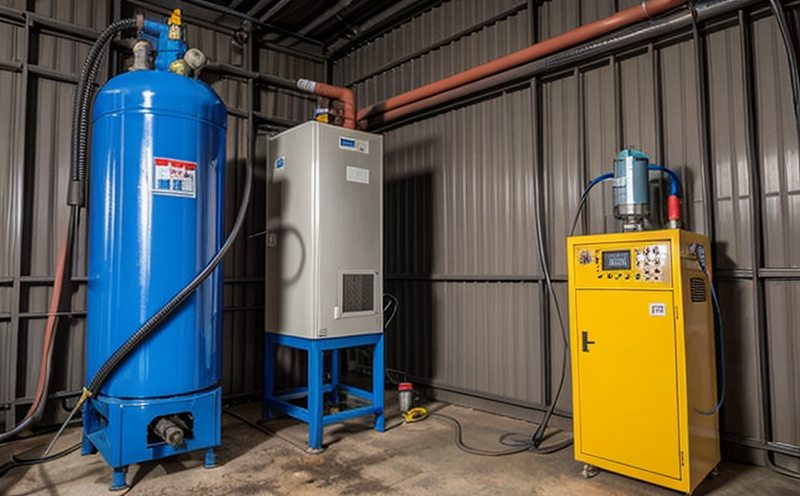Compressed air system inspection
The inspection of compressed air systems is a critical component in ensuring optimal performance and safety within industrial environments. Compressed air is widely used across various sectors, including manufacturing, food processing, healthcare, and automotive, making its reliability essential for daily operations. Proper maintenance and regular inspections help prevent costly downtime, reduce wear and tear on equipment, and ensure compliance with international standards.
Compressed air systems can be complex, consisting of multiple components such as compressors, filters, dryers, storage tanks, and distribution networks. The quality of the compressed air depends not only on the initial design but also on how well these components are maintained over time. Poorly maintained systems may result in contaminated or under-pressurized air, leading to product defects, equipment failure, and safety hazards.
Our inspection service focuses on identifying potential issues before they become critical problems. This includes checking for leaks, assessing the condition of filters and dryers, evaluating the efficiency of compressors, and verifying that the system meets relevant international standards. By conducting these inspections regularly, businesses can extend the lifespan of their equipment, improve operational efficiency, and safeguard against unexpected disruptions.
One of the key aspects of our inspection service is understanding the specific needs of different industries. For instance, in food processing, it's crucial to ensure that all compressed air used in packaging machines meets strict hygiene standards. In contrast, automotive manufacturing might prioritize ensuring that the air pressure is consistent across various production lines. Our team works closely with clients to tailor each inspection to their unique requirements.
Another important consideration is the environmental impact of compressed air systems. Many companies are now striving for sustainability and energy efficiency. By identifying areas where improvements can be made, we help businesses reduce their carbon footprint while also lowering operational costs. This could involve upgrading older equipment or implementing better maintenance practices that minimize energy consumption.
In summary, a comprehensive inspection of a compressed air system is not just about checking hardware; it's about ensuring the entire system operates at peak performance levels consistently and safely. Our goal is to provide clients with actionable insights they can use to maintain their systems effectively, thereby enhancing overall productivity and reducing risks associated with poor maintenance practices.
Why It Matters
The importance of inspecting compressed air systems cannot be overstated given the critical role it plays in various industries. Failure to properly manage these systems can lead to numerous problems, ranging from minor inconveniences to major safety hazards and financial losses.
Product quality: Contaminated or low-pressure compressed air can significantly affect product integrity. For example, in pharmaceutical manufacturing, even small amounts of moisture or oil contamination could compromise the effectiveness of medications.
Equipment longevity: Regular inspections help identify and address issues early on, preventing minor problems from developing into costly repairs or replacements. This also ensures that your equipment remains efficient over its useful life span.
Safety compliance: Ensuring adherence to relevant regulations like ISO 12500 for air cleanliness and quality helps avoid penalties and enhances reputation among stakeholders.
Operational efficiency: A well-maintained compressed air system reduces energy consumption, improves production throughput, and minimizes downtime. This translates directly into increased profitability for businesses.
Scope and Methodology
The scope of our compressed air system inspection service is tailored to meet the specific needs of each client, but generally includes several key areas:
Equipment assessment: We evaluate all major components of your compressed air system, including compressors, filters, dryers, and storage tanks. This involves checking for signs of wear and tear, ensuring proper functioning, and verifying compliance with relevant standards.
System performance testing: Using advanced instrumentation, we measure critical parameters such as pressure levels, flow rates, and temperature to determine whether the system is operating within optimal ranges.
Cleaning and maintenance recommendations: Based on our findings during inspections, we provide detailed reports recommending any necessary cleaning or maintenance actions. These might include replacing worn-out parts, recalibrating sensors, or adjusting settings for better performance.
Documentation and reporting: Every inspection comes with a comprehensive report detailing all observations, recommendations, and results. These documents serve as valuable resources both for internal reference purposes and external compliance requirements.
International Acceptance and Recognition
The International Organization for Standardization (ISO) has developed several standards related to compressed air quality, including ISO 12500 which specifies the cleanliness of compressed air used in industrial processes. Compliance with these standards ensures that your system meets international benchmarks.
Additionally, European Norms (EN) and American Society for Testing and Materials (ASTM) also provide guidelines that are widely accepted globally. Adhering to these norms demonstrates commitment to maintaining high-quality compressed air systems.





